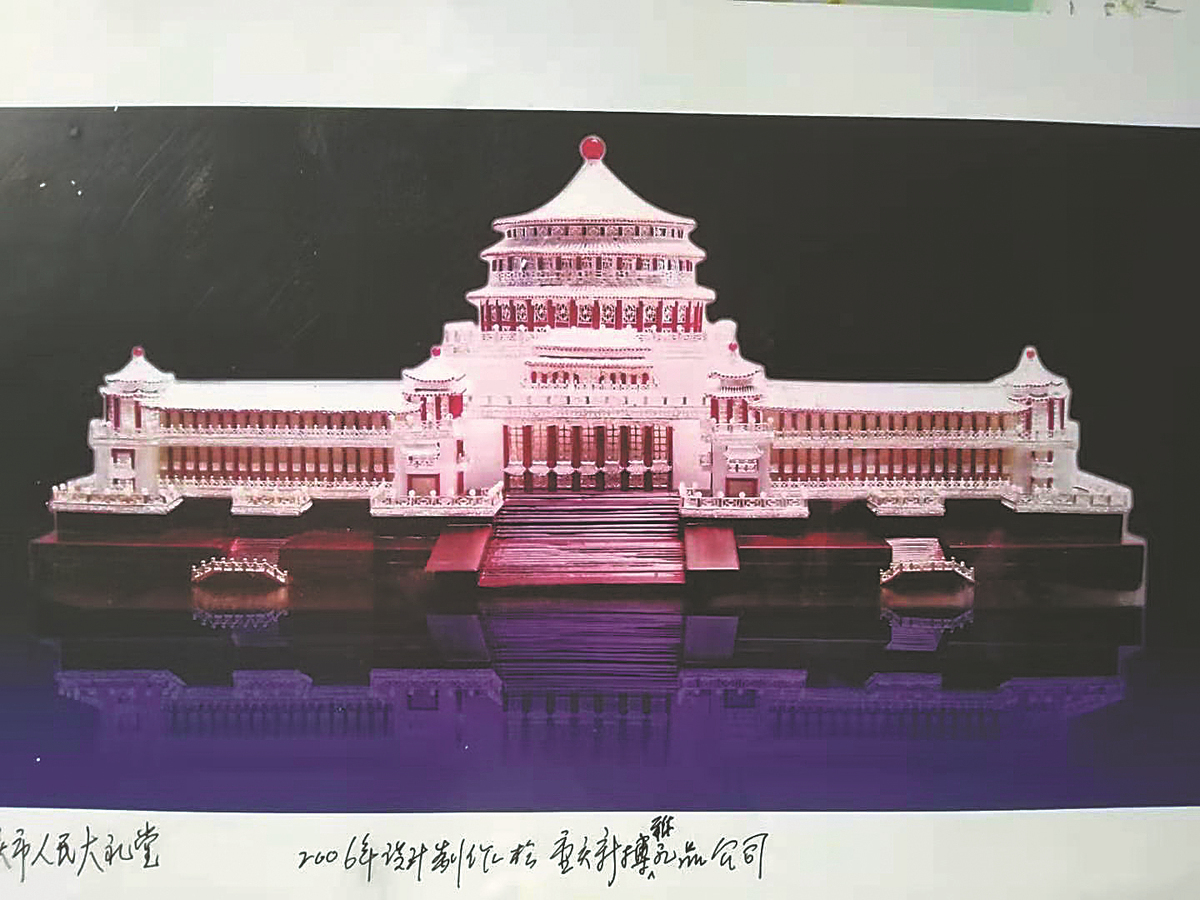Master designer helps keep art form alive


An intricate form of metalwork often used in jewelry, Chinese filigree uses twisted threads of gold, silver and copper, woven into a structure onto which jade and precious gems are mounted. The art takes various forms.
Li's hands have been roughed by the daily work of forging and rubbing the metals. Even so, he finds pleasure in the tedious tasks.
After years of practice, he is able to draw the metal into threads thinner than a hair and make vivid pieces of art.
He has created sensations with his breathtaking miniatures, which have included models of the Chongqing People's Hall and the Empress Dowager Cixi's carriage.
"Of all handicraft arts, those involving metal are the most complex," Li said.
The process of making the inlays can also involve chiseling, precision casting, coloring, making use of enamel, color painting and resin dyeing.
"Any of those individual skills might take a person years to learn, but Teacher Li masters them all, which is quite rare nowadays," said his apprentice, 36-year-old Shi Qianya.
China's reform and opening-up in the late 1970s helped bolster the handicraft industry, which reached its peak in the mid-1990s. With so many overseas orders for his pieces at the time, Li often struggled to complete the orders.
Around the turn of the millennium, more advanced equipment and designs, along with the lower cost of gold and silver created more competition in China's coastal regions and resulted in a devastating decrease in orders. Li's company went bankrupt in 2004 and filigree inlay work in Chongqing has been on the decline ever since.
But he did not give up. From 2004 to 2006, Li traveled to cities around China, including Beijing, Chengdu in Sichuan province, Guangzhou and Shenzhen in Guangdong province, and Zhangzhou in Fujian province to learn different techniques.
In his view, the continuous honing of one's skills is a basic criterion for any craftsman, but a true craftsman should also be able to innovate.
Li said his filigree inlay art is inclusive, consisting of elements from the south of China to the north, much like all-embracing Chongqing.


















